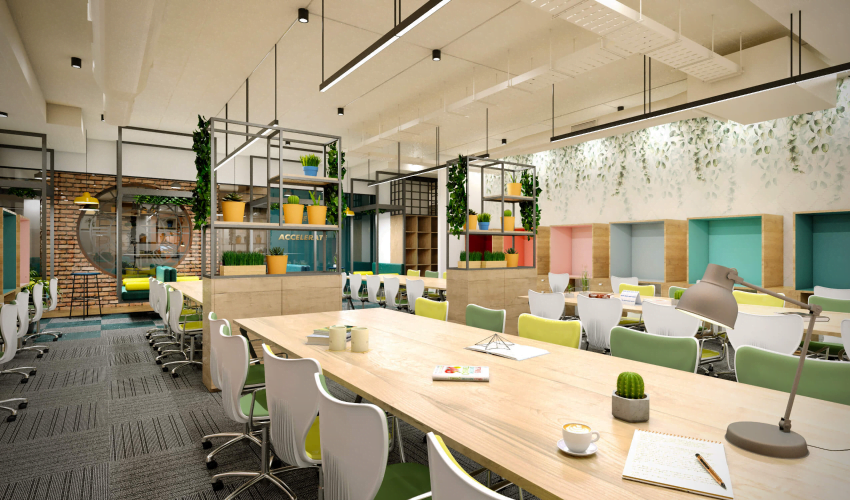Around 6 months back, an emerging Apparel brand got in touch with RDash team looking for a solution to aid their projects team in launching their new stores.
This blog will explore the challenges faced by the D2C brand looking for rapid physical retail expansion, their dilemma in optimizing cost, operations mess, speed to launch, zeroing down the actual root cause of problems – leading to the introduction of solutions that streamline processes, enhance collaboration, and significantly reduce overall project expenditure.
Whenever the projects are repetitive in nature, like in the case of retail projects, the primary aim of the Projects team should be to make a repeatable engine of every task, activities and teams involved so that the system churns out the same quality projects repeatedly, just like an assembly line.
 Puneet Bansal, Co-Founder, RDash
Puneet Bansal, Co-Founder, RDash
About the Customer:
The Brand is an emerging player in the apparel industry who has an established omnichannel presence.The brand is present across all online channels as well as on streets with currently 80+ stores within 8 cities.
After covid, it saw a rapid rise in demand in its category and to ride on it, it is doubling down on its physical network in tier1 cities along with launching in tier2 cities with a plan to open 100+ stores every year in premium (3000 sqft) and semi-premium format (1500 sqft).
Challenges: Projects Team’s Dilemma
Before launching its physical presence, the company created a Projects team with experienced Architects, projects head and Regional project executives. Initially, the company spent some time in creating its design identity which resembled its ethos which its online customers could resonate with. The Architect and Projects head iterated or rather negotiated on the the choice of fixtures, furnitures, floorings, assets, and experiential elements based on their costs, ease of availability and time to install. Parallelly, the Business team was on lookout for best highstreet retail properties and was signing lease with them.
When it actually came to building the store, the projects team operated with full control, made plans of initial stores, their BOQs, activity schedule and floated parts of overall fit out work to speciality contractors. This meant the individual jobs like Tiling, carpentry, POP & painting, HVAC etc were given to experts who were not subcontracting the work further, while few of them working in parallel also. This resulted in a higher quality output with an optimised cost of BOQ.
However, after launching 10 outlets in this controlled manner, as the frequency to launch newer outlets in parallel increased, the projects team faced significant challenges in tracking individual retail projects’ milestones, keeping tap on work progress of individual subcontractors, managing so many vendor invoices, their payments, indirect costs incurred by team in travel and coordinating between subcontractors.
To avoid these problems and choosing speed over control in launching newer stores- as a company goal, the projects team decided to allocate orders to turnkey vendors and that too on a per square foot (sqft) cost basis based on their experience of cost involved !
This definitely gave the company speed in launching their newer outlets as it uprooted the operations to and fro between various subcontractors, approvals on estimates before awarding became fast, however this effectively turned the entire construction project management into a black box. While the company has aggressive plans to further expand its physical presence, the projects & finance team was looking to resolve the problems and make it a machinery that should give them both Control – to the Projects team, Cost Saving – to the CFO and Speed – to the Brand as whole.
Dissecting the Problems
There are a lot of challenges that the company faced in rolling out new properties and in refurbishing existing outlets. Listing those problems out as discovered by our customer success team during initial phase of problem understanding and bucketing them under 4 heads:
A. Cost Issues
When projects were awarded on a fixed per square foot cost basis, the Projects team was missing out on the opportunity for detailed cost optimization. This included the ability to analyze costs item by item, make comparisons among different vendors, value engineering to improve and optimize fit-out elements that may not have been fully efficient.
When projects were delegated to subcontractors in a controlled manner, the client’s primary emphasis was on monitoring the direct expenses associated with orders to subcontractors. However, indirect costs such as travel, meals, lodging, and site-related expenditures were categorized as administrative costs and were not factored into the project’s overall cost. This practice resulted in a lack of clarity regarding the actual cost of the retail project.
After deemed completion of projects(Pre-handover), the snag reporting used to take indefinite cycles and this last leg took almost 30% of project timeline, causing delays, difficulties in assigning responsibility for resolving snags to a particular vendor – leading to cost overrun and delay in handover of property to operations.
Without item wise BOQ and reporting on actual work done, inconsistent billing practices followed by vendors led to unpredictability of payments to vendors and financial discrepancies for the brand CFO. Approximately 80% of the projects were experiencing delays, resulting in dead rental costs and sales losses due to delayed store openings.
B. Quality issues
In some instances, the site surveyor was unable to capture all the necessary details, which necessitated multiple site visits, additional design revisions, and ultimately led to quality issues during the execution phase.
On a few occasions, the site engineer inadvertently missed the latest version of the design files and began construction based on an outdated layout. This oversight resulted in quality concerns, necessitated rework, and caused costly delays.
The client was giving out a standard BOQ created at the very beginning for every project, even if the size , format of the particular outlet has changes. In many cases few items were needed different from standard BOQ but the information on these changes were not maintained and did not get communicated to the contractors, which resulted in quality non-conformation and blame-game between the projects team and vendors.
C. Visibility/Control Issues
Difficulty in tracking project progress on the basis of whatsapp communication where particular project and item context is missing.
Inability to monitor the performance of individual teams involved in the projects.
No clear correlation between the allocation of manpower resources and actual progress on site.
Without item wise BOQ and reporting on actual work done, Inconsistent billing practices followed by vendors leading to unpredictability of payments to vendors and financial discrepancies for the Brand.
Capturing runtime changes in the BOQ was difficult, and there was no clear visibility into approved and draft items as well as what is owner/Landlord scope.
D. Timeline Issues
Multiple to and fro communication happening during pre-construction activities resulted in delay ranging from 3-5 days, incurring dead rental costs and sales losses.
Absence of effective delay tracking mechanisms resulted in a reactive rather than proactive approach to managing project delays.
Collaboration-related issues caused around 80% of the projects to run behind schedule, with delays ranging from 7-12 days
The snag clearance process consumed an extended period of 20 to 25 days, which is 35% of the total project time – spent on rectifying and finalizing the last 5% of work completion.
Solving the Problem
After understanding the problems faced by clients which were adversely affecting quality and leading to cost overrun, following solutions and process were established for effective management of Projects
-
- Checklist based Site Survey: Through RDash, Client implemented a checklist based site survey ensuring that all details of site are captured correctly and clearly communicated to the design team in one go without having to do multiple Site Surveys which helped reduce the site delay by at least 3 days.
- Design Management: RDash helped the client in maintaining different versions of a design files on the platform in a set format so that no miscommunication occurs between Design, Onsite & Production Team.
- Easy Context based collaboration: The platform facilitated effective collaboration among team members through Contextual discussion on design changes, purchase orders, runtime issues within a project.
- Quality conformation with element guidelines: Leveraging the “Catalog Management” functionality within RDash, which, in addition to creating a Master Catalog, also provides the capability to retain various versions of specific elements as needed, assisted the client in efficiently communicating precise element guidelines and changes to vendors. This ensured standardization across outlets opened in various regions and avoided rework.
- Rate Contracts: Elemental level rate contracts were established with specialised vendors on almost 85% of the elements which were later optimized based on qty consumed over time and quality conformation by respective Vendors.
- Runtime Changes in BOQ: RDash helped client in capturing runtime changes in BOQ while also keeping track on what order is approved and what is pending so that there is no Information Disparity with Vendors.
- Enhanced Project Visibility: The Platform provided complete visibility of each project’s stage, along with associated deadlines, giving the leadership team control of their sites right from their office.
- Manpower vs Site Progress monitoring: Through RDash, client was able to track progress vis-a-vis manpower allocated on daily basis keeping a track on cost
- Project Progress based payment outflow: Based on BOQ item progress feature on RDash, the client got to know the actual project scope delivered by the vendors in real time. Thus, payment outflow was defined by both vendors and clients on the basis of this % project completion.
- Snag Management: Snag management system of RDash helped the client in tracking quality non-conformation with respect to BOQ element while also linking it with assigned vendors. This ultimately helped the client in reducing snags by removing those items from the scope of defaulting vendors and at the same time reevaluating the item through value engineering.
- Conflict Management: Since each image captured using R’Dash has a timestamp, the record becomes instrumental in resolving conflicts with the landlords, pertaining to the condition of the site, such as seepage, dampness, and other issues by comparing the site’s condition at the time of renting to a later stage.
- Data Management: Training company’s projects and finance team on the user-friendly platform enabled all relevant stakeholders to log-in and manage the shared information repository covering every aspect of the projects including Site Survey reports, Design Files, approved BOQs, Purchase Orders, Progress Updates, Goods receiving notes, Vendor bills, agreements, equipments warranty and indirect expense proofs.
- Capturing exact cost of Project: RDash made it easy for capturing indirect costs like travelling, accommodation and even rectification costs and mapping it to relevant project which ultimately helped the client in determining the exact cost incurred on a project which actually revealed the real per sqft cost of the retail project.
- Delay Tracker: RDash helped in timestamping delay at each stage while also defining clear responsibility to a stakeholder. Multiple delay trackers were put in place to ensure that any significant delay can be captured at the initiation stage and proactive measure can be taken to prevent delay.This helped reduce 6-8 days in project completion.
- Value Engineering: Digitised BOQ helped the project team in deep element-level analytics and cost optimisation through value engineering, ensuring efficient budget management.
- Spend Leakage control through documentation: R’Dash aided client in controlling spend leakage through documentation by facilitating the comparison of the order scope with the actual work done on-site. The software captured real-time changes, ensuring there is no mismatch in BOQ vs billed qty.
- Financial Audit: Financial Audit of the client became easy because of the control mechanisms in place for financials, purchase order (PO) generation, and payment systems. Since all financial data related to the project is stored in the system. This comprehensive record ensures transparency and provides the necessary documentation to address any inquiries or concerns raised during the audit process.
Results
After Implementing the above solutions, The customer experienced following results in Project costs and performance:
12% Saving in Cost : 3.5% – By means of Dead Rentals, 4% by means of improved Rate Contracts, 2% due to unnecessary manpower & Travel cost, 2.5% Due to avoiding rework.
30% faster execution : Average delay reduced from 80% to 45% in 3 months and to 15% in 6 months, Drastic cut-down in Pre-construction & planning time.
Summarizing
Whenever the projects are repetitive in nature, like in the case of retail projects, the primary aim of the Projects team should be to make a repeatable engine of every task, activities and teams involved so that the system churns out the same quality projects continuously, just like an industrial assembly line. While this can be done through writing strong SOPs and document checklists, enabling it through technology can make this process predictable and automated where everybody knows what to do next.
For Management, in addition to these standard processes, a high level view becomes very handy – where they can just focus on the projects or issues they should intervene in and make best use of their expertise. RDash control tower sets these conditions of delays and cost deviations one time and alerts the management wherever there is breach of time or money along with project context where they can dig into to resolve those issues and bring the projects back on track.
For further details, feel free to book a demo with our expert team!





